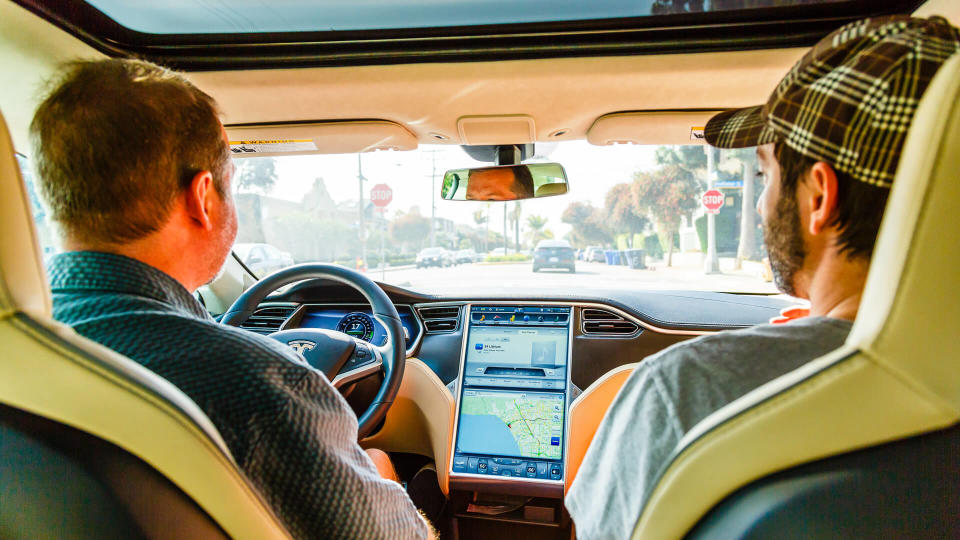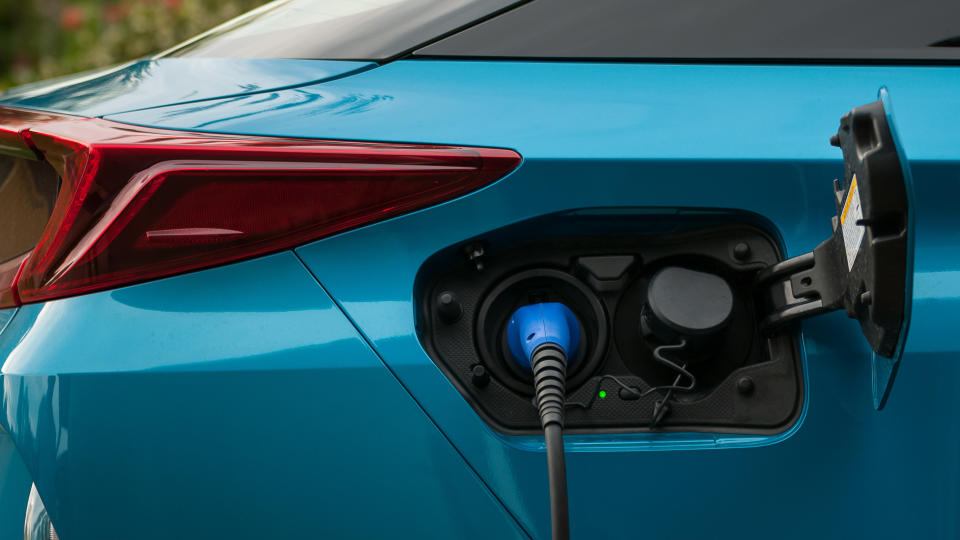5 Questions To Ask Before Buying an Electric Vehicle

So you’re ready to cut gas stations out of your life forever. You’re ready to take your carbon footprint down a few shoe sizes. You’re ready to stick it to the oil companies and you’re definitely ready never to pay for gas again. But are you really ready to drive an electric vehicle?
Read: 17 Hidden Auto Costs Your Dealer Will Never Tell You About
Making the leap from what you’ve known for your entire driving life to a car without an engine is quite a transition — although one that more and more drivers are making every year. Ask yourself the following questions before you plug in.
Last updated: Feb. 23, 2021

Is It Eligible for a Tax Credit?
Going electric can earn you a federal tax credit of up to $7,500. That’s not a deduction, since it directly reduces your tax bill on a dollar-for-dollar basis. It’s not refundable — you don’t get to keep any that might be left over — but it can bring your tax bill all the way down to zero. The problem is, the credit begins phasing out once a manufacturer sells 200,000 EVs. Some of the most popular models — including from General Motors and Tesla — come with a reduced credit or no credit at all. Both the IRS and the U.S. Department of Energy (DOE) maintain a list of manufacturers and models with their corresponding tax credits.
See: Here Is the Difference in Tax Burden Between the Rich and Poor in Every State

What Will It Take To Charge at Home?
As long as it’s within 25 feet of wherever you park your car, you can plug any EV into any standard 120-volt wall outlet, but it’s a slow process. This option is perfect for charging overnight, but to power up faster, you might want to consider installing a Level 2 charger, which is 240 volts. That will give you a range of 10-60 miles in only an hour. It will also, however, run you about $500-$900, according to Consumer Reports, but incentives could cut that expense in half. Installation, which any electrician can perform, will cost $200 and up, but state rebates and other incentives can potentially lower the cost of installation as well. With the addition of solar panels, and/or if your utility company reduces rates during off-peak hours, home charging can be free or close to it.
Find Out: Biden Wants to Shut Down Credit Bureaus – What Would That Mean for You?

What About Charging on the Go?
With more and more charging stations popping up all over the country, finding a spot to top off your battery is easier than ever. Charging stations are now active all over the country, even in remote areas and rural states. Charging isn’t free, but it’s always much cheaper than fueling a regular car with gas. In most cases, you’ll spend about half as much for the same amount of driving, according to Consumer Reports. Visit the DOE Alternative Fueling Station Locator to map charging stations or visit Plugshare.com or download the Plugshare app.
More: 30 Biggest Do’s and Don’ts When Buying a Car

What’s the Range?
According to Car and Driver, determining an EV’s actual range is trickier than you might imagine. Same as with gas mileage, a vehicle’s battery range on the road in real life doesn’t always match the EPA rating in the manufacturer’s spec sheet. In practice, you can expect to drive about half as many miles in an EV without recharging as you would have in a comparable gas vehicle between trips to the pump. Among all 33 2020 model year EVs with EPA ratings, ranges vary from 110 miles for the Mini Cooper Electric to 373 miles for the Tesla Model S Long Range.
Find Out: Are You Eligible for a Third Stimulus Check – and If So, When Will You Get Yours?

Do Low Ownership Costs Negate the High Purchase Price?
EVs are more expensive to buy than comparable gas cars — often by a lot — but the tradeoff is a much lower long-term cost of ownership that eventually makes up the difference. Those lower ownership costs aren’t only because charging is cheaper than filling up at the pump. Since they don’t have engines, EVs have far fewer moving parts and generate far less heat — no motor oil is required — which means there’s much less to go wrong, break down and require expensive repairs. According to Car and Driver, the lower cost of charging and maintenance associated with EVs eventually pays off, but sometimes not for three years or more due to their significantly higher MSRPs.
More From GOBankingRates
This article originally appeared on GOBankingRates.com: 5 Questions To Ask Before Buying an Electric Vehicle

